This article was co-authored by Tu Anh Vu, DMD. Dr. Tu Anh Vu is a board certified dentist who runs her private practice, Tu's Dental, in Brooklyn, New York. Dr. Vu helps adults and kids of all ages get over their anxiety with dental phobia. Dr. Vu has conducted research related to finding the cure for Kaposi Sarcoma cancer and has presented her research at the Hinman Meeting in Memphis. She received her undergraduate degree from Bryn Mawr College and a DMD from the University of Pennsylvania School of Dental Medicine.
There are 10 references cited in this article, which can be found at the bottom of the page.
This article has been viewed 262,793 times.
Oral health is an important part of maintaining your overall well-being. According to board-certified dentist Tu Anh Vu, "An electric toothbrush cleans your teeth better than a manual toothbrush because it pulsates at a higher rate than you can move your hands." By following proper technique of using an electric toothbrush and guidelines for twice-daily brushing, you can keep your teeth pearly white, your breath fresh, and help prevent cavities or other infections.[1]
Steps
Using the Toothbrush
-
1Charge the unit. You won't be able to use an electronic toothbrush if your batteries are dead or it isn't charged. Either keep the toothbrush cradled in its charger or change the batteries when you notice it's losing its power, which can help ensure that you can use the toothbrush most effectively. If you run out of power, then you can either continue brushing manually or get a regular toothbrush if you have one.
- Store your toothbrush close enough to the sink so it is easy to reach, but far enough away that you won't accidentally knock it into the sink and get electrocuted if the toothbrush is plugged in.
- Consider keeping extra batteries on hand so that you can always brush your teeth.
-
2Maintain the integrity of your brush. Your electric toothbrush should have soft, nylon, and round-ended bristles for the most effective brushing. These bristles can wear with regular use and you should inspect the brush regularly to maintain its integrity, which can help ensure that you get the best brush possible.[2]
- Make sure the bristles don't have any sharp or jagged edges or endpoints.
- Make sure that the bristles are not falling out. Also, check the colored bristles. If they start fading, it means that you should change the tip with a new one.
- Replace your electronic toothbrush head every three to four months, or more often if you notice any of the above-mentioned issues
Advertisement -
3Prepare your toothbrush. Run your toothbrush under some water and apply a pea-sized dab of toothpaste onto the brush. This can help prepare your toothbrush for the most effective cleaning of your teeth and oral cavity. You can also apply the toothpaste on your teeth while toothbrush is turned off to better spread the paste around your mouth. If you have sensitive teeth due to weakened enamel, board-certified dentist Tu Anh Vu suggests "using a fluoride toothpaste formulated to help minimize sensitivity."
- Consider using a fluoride toothpaste, which can help strengthen your teeth and remove plaque that causes disease and decay.
-
4Divide your mouth into four quadrants. Dividing your mouth into top, left, right, and bottom quadrants to tackle your brushing routine. This can help ensure that you brush each section of your teeth and mouth cavity.
- You can start with whichever quadrant you like or is most comfortable to you and you should spend about 40 seconds on each quadrant while brushing every single surface of your teeth.
- Make sure to brush your tongue and the roof of your mouth.
-
5Place toothbrush bristles along gum line. Hold your toothbrush at a 45-degree angle to your gum line. Keep the bristles in contact with your tooth surface and gum line, which can help ensure you get the most effective brush possible.[3]
- Apply only gentle pressure, as too much can injure your teeth and gums. The vibrations of your electronic toothbrush can also add a little additional pressure.[4]
-
6Brush from outer to inner tooth surfaces. Maintaining the 45-degree angle, brush the outer surfaces of two to three teeth using a back and forth rolling motion. Once you've completed this procedure for a quadrant, move to the inner surfaces of your teeth and repeat the same procedure.[5]
- The rolling motion is achieved by contacting the brush to the gum line and then moving downward with the toothbrush towards the chewing surface. Also, brush your gums with gentle pressure and avoid holding the brush for too long next to the gum line because the rotation can cause gum recession over time.
- To brush behind your front teeth, tilt the brush vertically and make up and down strokes using only the front half of your brush.
-
7Clean biting surfaces, your tongue, and soft palate. You'll also need to brush your tongue and palate as well as the biting surfaces of your teeth.[6] This can help remove debris and other odor-causing bacteria.
- Use a gentle back and forth scrubbing motion to clean the biting surfaces and your tongue.
- Use an equally or more gentle back and forth motion to clean your soft palate, or the roof of your mouth.
-
8Brush gently and thoroughly. Spend at least two minutes brushing your teeth, or about 30 seconds per quadrant. If you have trouble keeping track of time, board-certified dentist Tu Anh Vu suggests "choosing an electric toothbrush with a built-in timer if you have trouble remembering to brush your teeth for 2 whole minutes." Doing this at least twice a day can help prevent cavities and tooth decay by minimizing the debris and bacteria in your mouth.[7] Vu also advises "not scrubbing too hard, as this can lead to enamel erosion and receding gums."
- You can even brush a little longer than 2 minutes, which will give you time to clean under your tongue and scrape your tongue and the roof of your mouth.[8]
- Pressing too hard can damage your gums or wear down your enamel.[9]
- Wait 15 to 20 minutes after eating or drinking acidic foods to help maintain your enamel.[10] This will provide plenty of time for the saliva to remineralize the enamel and create an alkaline environment. Instead, chew a piece of sugar-free gum that contains xylitol after meals and before brushing.
-
9Floss between your teeth. Even with thorough brushing, dentists recommend flossing your teeth twice a day. This can help remove plaque and food particles from between your teeth that brushing couldn't reach. When you floss, board-certified dentist Tu Anh Vu suggests "pushing the floss down so you're massaging your gums, rather than just gliding the floss between your teeth."
- Remove about 18 inches (46 cm) of floss from the packaging. Wrap it around your middle fingers. You can then grasp the floss between your thumbs and forefingers which can help you clean more effectively.[11]
- Make sure to be very gentle when guiding the floss between your teeth. Curve it against your tooth when it hits your gumline.
- Rub the side of each tooth with the floss in an up and down motion. Try to remove the plaque formed under your gums and practice until you get the best results.
- You may brush or floss first. A small study has shown, however, that flossing before brushing may increase the efficacy of fluoride.
-
10Use an antiseptic mouth rinse. After you have brushed and flossed, rinse out your mouth with some clean water and a mouthwash. Some studies have shown that mouthwash can reduce plaque and gingivitis and promote overall oral health. Mouthwash can also remove lingering particles of food or other germs.[12]
- Swish around the water and mouthwash in your mouth.
- Mouthwashes containing chlorhexidine are generally the preferred type of mouthwash. Products that contain alcohol may dry out your mouth and cause bad breath or even sores or ulcers.
-
11Store your toothbrush. Once you've finished your brushing routine, rinse off the toothbrush head and return it to its storage unit. This can help maintain the integrity and life of your toothbrush. Remove the brush from the handle, and hold it under running water for a few seconds. Set it upright in its holder to dry.[13]
- Rinsing off your toothbrush with tap water will clean off any lingering toothpaste or debris.
- Avoid covering your toothbrush head, which can help promote the growth of bacteria.
- Make sure you store the toothbrush in an upright position.
Maintaining Oral Health
-
1Brush and floss twice daily. Brushing and flossing each day as well as after meals may promote the health of your oral cavity. A clean environment may prevent cavities, infections, and stains.[14]
- Brush and floss 15 - 20 minutes after meals if you are able. If you have food or other debris lingering in your teeth, it can promote infection and decay. Chewing a piece of gum may help minimize this risk if you don't have a toothbrush available.[15]
-
2Avoid sugary and acidic foods and beverages. Foods and drinks containing sugar or acid can contribute to oral decay, and watching your intake can help maintain your oral health. Cleaning your teeth after consuming these items may minimize your risk of tooth decay and infection.[16]
- A healthy and well-balanced diet of lean protein, fruits and vegetables, and legumes can promote your overall well-being, including oral health. Raw fruits and vegetables are best. Raw fruits and vegetables help clean the teeth. Also, stick to whole grain bread and avoid sugary foods.
- Some otherwise healthy foods are acidic. This includes citrus fruits and wine. Continue to enjoy these foods and beverages, but reduce how much you consume and consider brushing your teeth 15 to 20 minutes after you're done to prevent enamel loss.
- Some examples of sugary and acidic foods and beverages of which to steer clear are soft drinks, sweets, candies, and wine.
-
3Use alcohol-free mouthwashes and toothpastes. Mouthwashes and toothpastes that have alcohol may damage your enamel and overall oral health. Use toothpastes or mouthwashes that have no alcohol to minimize your risk for these problems.
-
4Avoid grinding your teeth. If you clench and grind your teeth, you may damage your teeth and mouth. If you're a tooth-grinder, talk to your dentist about wearing a mouth guard.
- Grinding can cause tooth sensitivity and damage including chips and cracks.
- Biting your nails, opening bottles or keeping objects between your teeth are also bad habits. Avoid these habits as much as possible so that you don't damage your teeth.
-
5Visit your dentist's office regularly. Schedule regular checkups with your dentist at least twice a year. If you are having issues with your teeth, see your dentist more often.[17] Board-certified dentist Tu Anh Vu agrees that "it's cheaper to prevent things from happening. If you wait too long to see a dentist, you might need a bigger, more costly procedure."
- For instance, a small cavity might be treated with just a filling, but if you wait, you may end up needing a root canal instead.[18]
Expert Q&A
Did you know you can get expert answers for this article?
Unlock expert answers by supporting wikiHow
-
QuestionHow do you use an electric toothbrush properly?
 Tu Anh Vu, DMDDr. Tu Anh Vu is a board certified dentist who runs her private practice, Tu's Dental, in Brooklyn, New York. Dr. Vu helps adults and kids of all ages get over their anxiety with dental phobia. Dr. Vu has conducted research related to finding the cure for Kaposi Sarcoma cancer and has presented her research at the Hinman Meeting in Memphis. She received her undergraduate degree from Bryn Mawr College and a DMD from the University of Pennsylvania School of Dental Medicine.
Tu Anh Vu, DMDDr. Tu Anh Vu is a board certified dentist who runs her private practice, Tu's Dental, in Brooklyn, New York. Dr. Vu helps adults and kids of all ages get over their anxiety with dental phobia. Dr. Vu has conducted research related to finding the cure for Kaposi Sarcoma cancer and has presented her research at the Hinman Meeting in Memphis. She received her undergraduate degree from Bryn Mawr College and a DMD from the University of Pennsylvania School of Dental Medicine.
Board Certified Dentist
-
QuestionShould each quadrant have a pea-size toothpaste, or does that pea-size toothpaste represent the whole mouth?
 Cristian Macau, DDSDr. Macau is an oral surgeon, periodontist, and aesthetician at Favero Dental Clinic in London. He received his DDS from Carol Davila University of Medicine in 2015.
Cristian Macau, DDSDr. Macau is an oral surgeon, periodontist, and aesthetician at Favero Dental Clinic in London. He received his DDS from Carol Davila University of Medicine in 2015.
Doctor of Dental Surgery
-
QuestionWhat is the proper way to position an electric toothbrush on teeth and gums?
 Cristian Macau, DDSDr. Macau is an oral surgeon, periodontist, and aesthetician at Favero Dental Clinic in London. He received his DDS from Carol Davila University of Medicine in 2015.
Cristian Macau, DDSDr. Macau is an oral surgeon, periodontist, and aesthetician at Favero Dental Clinic in London. He received his DDS from Carol Davila University of Medicine in 2015.
Doctor of Dental Surgery
References
- ↑ https://www.mayoclinic.org/healthy-lifestyle/adult-health/expert-answers/electric-toothbrush/faq-20058325
- ↑ http://www.adha.org/sites/default/files/7221_Proper_Brushing_1.pdf
- ↑ http://www.adha.org/sites/default/files/7221_Proper_Brushing_1.pdf
- ↑ http://www.adha.org/sites/default/files/7221_Proper_Brushing_1.pdf
- ↑ http://www.adha.org/sites/default/files/7221_Proper_Brushing_1.pdf
- ↑ http://www.adha.org/sites/default/files/7221_Proper_Brushing_1.pdf
- ↑ http://www.mouthhealthy.org/en/az-topics/b/brushing-your-teeth
- ↑ Tu Anh Vu, DMD. Dentist. Personal interview. 7 May 2020.
- ↑ https://www.webmd.com/oral-health/features/brushing-teeth-mistakes
- ↑ https://www.webmd.com/oral-health/features/brushing-teeth-mistakes
- ↑ http://www.mayoclinic.org/healthy-lifestyle/adult-health/in-depth/dental/art-20045536
- ↑ http://www.ncbi.nlm.nih.gov/pubmed/23579302
- ↑ https://www.ada.org/en/member-center/oral-health-topics/toothbrushes
- ↑ http://www.mayoclinic.org/diseases-conditions/cavities/basics/prevention/con-20030076
- ↑ https://www.webmd.com/oral-health/features/brushing-teeth-mistakes
- ↑ http://www.mayoclinic.org/diseases-conditions/cavities/basics/prevention/con-20030076
- ↑ http://www.mayoclinic.org/diseases-conditions/cavities/basics/prevention/con-20030076
- ↑ Tu Anh Vu, DMD. Dentist. Personal interview. 7 May 2020.
About This Article
When you use an electric toothbrush, think of your teeth as being four sections: the right side, left side, top set of front teeth, and bottom set of front teeth. Brush each section separately by placing the brush at a 45° angle to your gum line, and move the brush in a back and forth motion toward the cutting edge of your teeth. To brush the inner tooth surface, hold the brush vertically and make up and down strokes with the front half of the brush. Keep reading for advice from our Dental Surgeon reviewer on how to brush your tongue and keep your gums healthy.
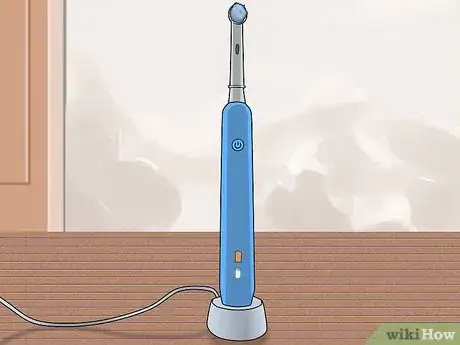
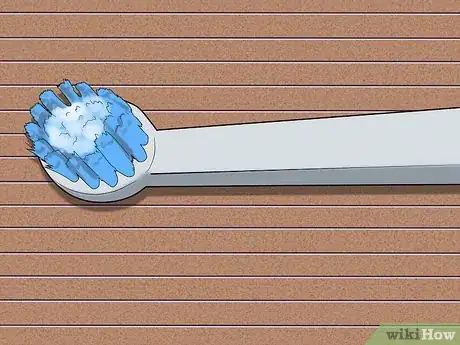




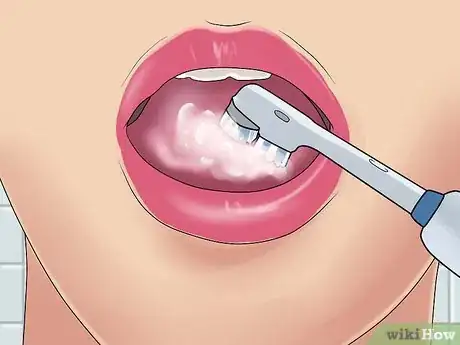

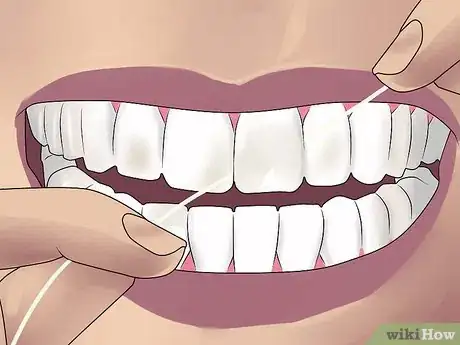

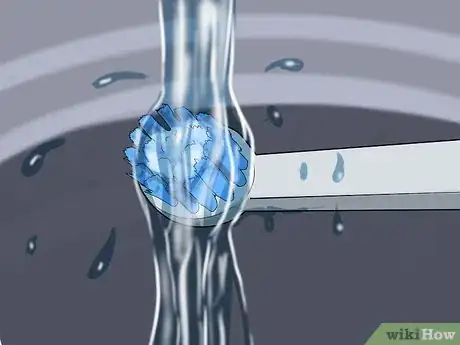
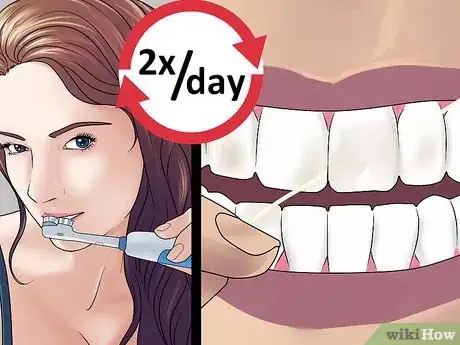
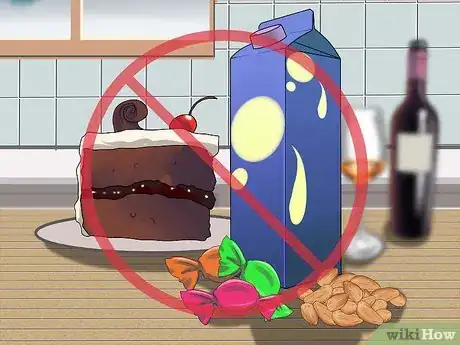

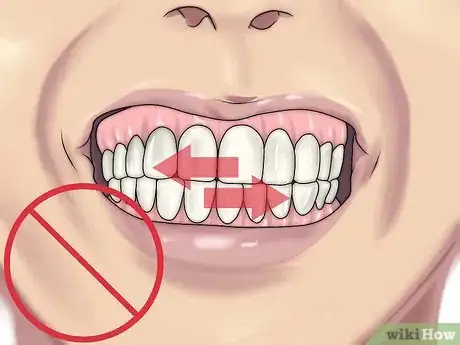
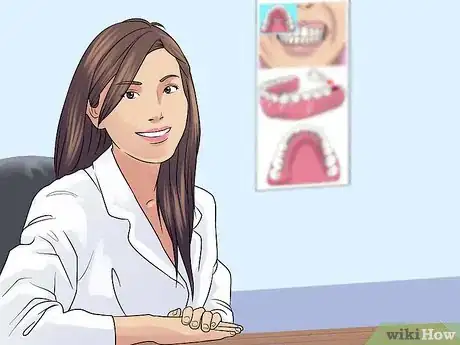

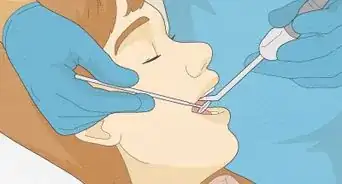

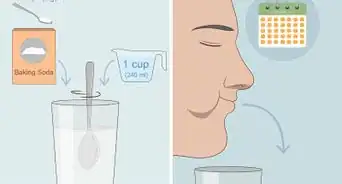
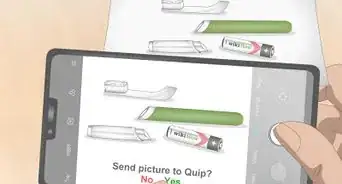

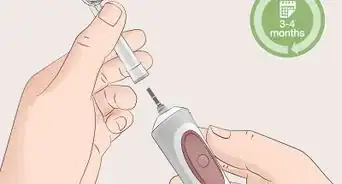
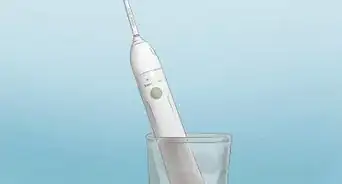

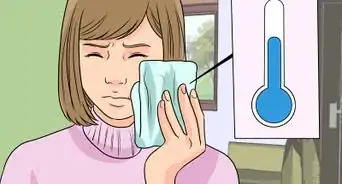


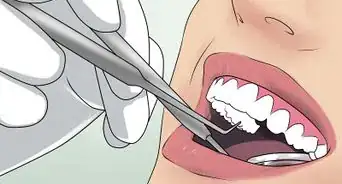












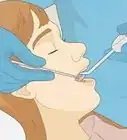

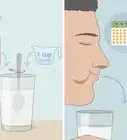



































Medical Disclaimer
The content of this article is not intended to be a substitute for professional medical advice, examination, diagnosis, or treatment. You should always contact your doctor or other qualified healthcare professional before starting, changing, or stopping any kind of health treatment.
Read More...